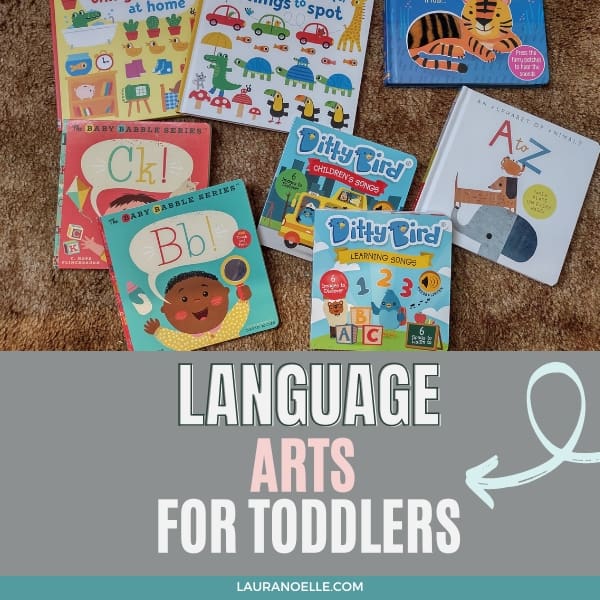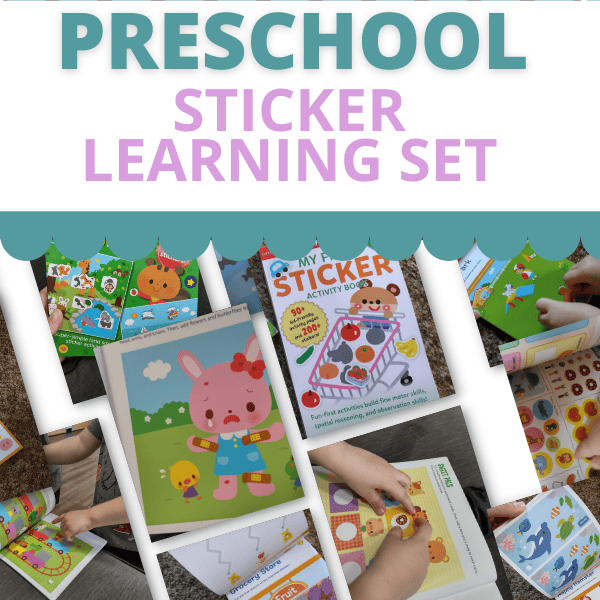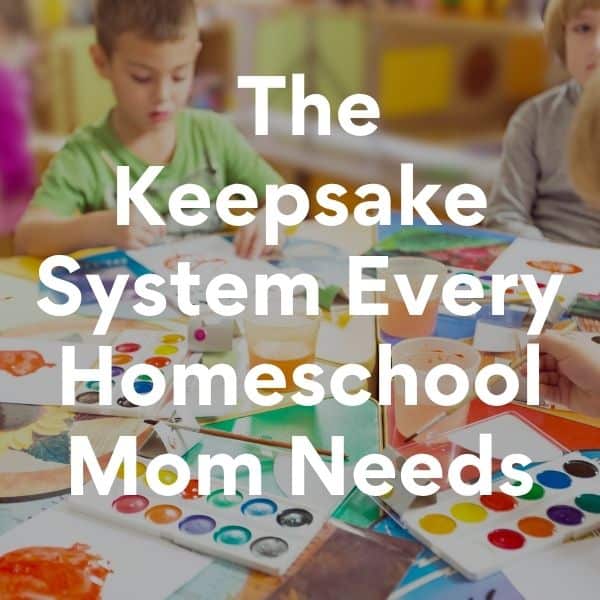Permission to Start Slow: The Gentle Mindset Reset Every Homeschool Mom Needs
This post may contain affiliate links, which means I may receive compensation if you make a purchase using one of these links.
Ever start a new homeschool year with Pinterest-perfect plans only to hit complete meltdown mode by day two? If you’re already feeling behind before you’ve even really begun, Mama, you are not alone. Today we’re talking about giving yourself permission to start slow, connect with your kids first, and let go of the pressure to be perfect.

Every year when back-to-school season starts, you start seeing it everywhere. Homeschool moms are sharing their beautiful new curriculum hauls, their color-coded planners, their perfectly organized homeschool rooms. And honestly? Some of it looks amazing.
But there’s also another side to the story. The moms who are already stressed before they’ve even started. The ones commenting things like, “This looks so overwhelming” or “I don’t know how you do it all” or my personal favorite—”We’re three days in and I’m already behind.”
Here’s the thing that no one talks about in those picture-perfect posts: most of us are setting ourselves up for failure before we even begin. We’re carrying this enormous weight of expectation—that this year has to be amazing, that our kids have to love every subject, that we have to have it all figured out from day one.
And Mama, I’m here to tell you today that is simply not true.
So if you’re feeling that pressure, if you’re looking at your messy reality versus everyone else’s highlight reel and wondering what’s wrong with you—this post is for you. Because today, we’re giving ourselves permission to start slow, to prioritize connection over perfection, and to remember that homeschooling isn’t about replicating school at home. It’s about nurturing the whole child—and that includes giving them the grace to ease into a new rhythm.
The Weight We Carry (And Why It’s Too Heavy)
Let’s get real for a minute about the pressure we put on ourselves as homeschool moms. Because I think we carry a weight that honestly, no one else fully understands.
We’re not just worried about whether our kids are learning—we’re worried about whether they’re learning enough, whether we’re teaching the right things, whether we’re ruining their future if we have a rough start to the year. We scroll through social media and see these perfectly curated homeschool setups, and we think, “That’s what a real homeschool mom looks like.”
Then reality hits. Your preschooler is having a meltdown because you changed the breakfast routine. Your eight-year-old doesn’t want to do math. Your teenager is giving you attitude about the literature you picked out. And suddenly, you’re thinking, “Maybe I’m not cut out for this.”
But here’s what I want you to understand: that pressure you’re feeling? It’s not actually about your kids’ education. It’s about the story you’re telling yourself that you have to be perfect in order to be worthy of homeschooling them.
I see this with my clients all the time. They come to me stressed about their curriculum choices, worried about their messy homeschool space, convinced that if they could just get more organized, their kids would suddenly love learning. And while systems that stick matter tremendously, that’s not the only problem. They often don’t even realize that the weight they are carrying wasn’t meant for them to bear.
The Lies We Believe About Starting Strong
Here are the weights you were never meant to carry:
- The weight of believing that your child’s entire educational success depends on you getting it right from day one
- The weight of thinking that a rough start means you’re failing
- The weight of comparing your real life to someone else’s curated online presence
And here’s the truth that might surprise you: even those moms with the perfect Instagram feeds? They’re struggling too. They’re just not showing you that part.
When the “Perfect” Start Falls Apart (My Reality Check)
Let me tell you about my own reality check moment. A few years ago, I went all in on planning my kiddo’s perfect Kindergarten year. I had the best curriculum and a color-coded schedule. All our supplies neatly set out.
Day one arrives, and I’m feeling so confident. I wake up early, get everything set up, and call my daughter down for our first official day. And within thirty minutes, everything fell apart.
She took one look at the math workbook and said, “This is boring. I don’t want to do this.” And instead of the peaceful, joy-filled learning environment I had envisioned, we had tears, complaints, and me feeling like a complete failure before 9 AM.
I remember thinking, “What am I doing wrong? Other moms make this look so easy.” I started questioning everything.
But here’s what I learned that day, and what I wish someone had told me earlier: it’s completely normal for things to be rough at first. Kids have their own transition period, and so do we. Just because something doesn’t go smoothly on day one—or day ten—doesn’t mean you’re failing.
The myth of the perfect start is exactly that—a myth. Real homeschooling is messy. It’s full of trial and error, good days and hard days, moments of pure joy and moments where you want to hide in the bathroom and eat chocolate.
And that’s not a bug in the system—that’s a feature. Because when we give ourselves permission to be imperfect, to start slow, to figure things out as we go, we’re actually modeling something really important for our kids: that learning is a process, not a performance.
Your Official Permission Slips
I want you to imagine I’m sitting across from you with a cup of coffee, and I’m handing you these permission slips. And I want you to really receive them, okay?
Permission Slip #1: Start Slow
Not everything has to happen in the first week. Not every subject has to be mastered in the first month. Your kids have been on summer break, playing and relaxing and being kids. It’s unrealistic—and honestly, it’s unfair—to expect them to jump from complete freedom to hours of structured academics overnight.
Starting slow isn’t starting wrong. It’s starting wisely.
Permission Slip #2: Listen to Your Family
You know your children better than any curriculum publisher. You know their rhythms, their interests, their learning styles. If something isn’t working, you don’t have to push through because it’s what you planned. You can pivot. You can adjust. You can choose connection over completion every single time.
Permission Slip #3: Let Go of Perfect
Your kids don’t need you to be perfect. They need you to be present. They need you to be loving. They need you to be willing to learn and grow alongside them. But perfect? Nope. That’s not on the list.
Permission Slip #4: You’re Not Solely Responsible
I know this might sound radical, but your children’s education is not 100% your responsibility. Yes, you’re their primary teacher and guide. But they also have their own minds, their own interests, their own role to play in their learning. You’re not pouring information into empty vessels—you’re partnering with curious, capable human beings.
When we try to control every aspect of their education, we actually rob them of the joy of discovery. When we carry all the weight, we teach them that learning is something that happens to them, not something they participate in.
The Connection-First Approach (What Starting Slow Actually Looks Like)
Okay, so what does this actually look like in practice? How do you start slow and still feel like you’re making progress?
Here’s what I recommend, and this is what I wish I had done in those early years: start your year with connection, not curriculum.
Instead of jumping straight into math and language arts on day one, what if you spent the first week—or even two weeks—just enjoying being together? Read amazing books aloud. Go on field trips. Do art projects. Play games. Have deeper conversations. Let your kids remember that learning with mom is actually fun.
I know some of you are panicking right now, thinking, “But we’ll get behind!” Behind what? Behind whom? You’re homeschooling. You have the beautiful freedom to move at your family’s pace, not some arbitrary external timeline.
Practical Ways to Ease In:
The One-Subject Start: Pick one subject—maybe the one your kids enjoy most—and start there. Get into a rhythm with that one thing before adding more.
The 30-Minute Rule: Start with shorter lessons and gradually increase the time. Thirty minutes of engaged learning is worth more than two hours of struggle and resistance.
Connection Mornings: Instead of diving straight into academics, start each day with something that brings you together—maybe reading a chapter from a book you all love, or working on a puzzle, or even just sitting together and talking about your plans for the day.
Buffer Days: Build in more breaks than you think you need. I’m talking about real breaks—time to run around outside, time to play, time to just be kids. Their brains need that processing time, and honestly, so does yours.
When Things Go Sideways (Because They Will)
Let’s be honest—even with all the grace and gentle starts, you’re still going to have rough days. Days when nothing goes according to plan, when everyone’s grumpy, when you’re questioning all your life choices.
First, normalize it. Bad homeschool days don’t mean you’re a bad homeschool mom. They mean you’re human, and you’re raising humans, and humans have hard days sometimes.
When things go sideways—and they will—give yourself permission to pivot. Maybe that means closing the books and going for a walk. Maybe it means switching to an audio book and having quiet time. Maybe it means calling it a day at 10 AM and trying again tomorrow.
I used to think that meant I was giving up or being weak. Now I realize it means I’m being responsive to my family’s actual needs instead of being controlled by my plan.
Your Rough Day Backup Plan
Here’s a practical tip that has saved my sanity more times than I can count: have a “rough day” backup plan ready. Mine includes:
- Educational documentaries
- Audio books
- Simple craft supplies
- A list of easy field trip options
- Nature walk routes
- Board games that sneak in learning
When everything falls apart, I don’t have to think—I just pivot to plan B.
And remember, your kids are watching how you handle the hard moments. When they see you respond with grace instead of frustration, when they see you adapt instead of force, you’re teaching them resilience and flexibility—skills that will serve them far better than any single lesson ever could.
Reflection Questions for Rough Days:
- What is my family actually needing right now?
- Am I forcing something that isn’t working?
- What would love do in this moment?
- How can I create connection instead of completion?
The Long View (Why the First Week Doesn’t Define Your Year)
Here’s what I want you to remember when you’re in the thick of a rough start: the first week—or even the first month—doesn’t define your homeschool year.
Think about it this way: if you were starting a new job, would you expect to have everything figured out on day one? Would you assume you were bad at your job if the first week was challenging? Of course not. You’d give yourself time to learn, to adjust, to find your rhythm.
Homeschooling is no different. You’re not just teaching your children—you’re learning how to teach your children. You’re figuring out what works for your family, what doesn’t, what needs to be adjusted.
Your job isn’t to be a perfect teacher from day one. Your job is to be a loving, present mom who is committed to her children’s growth and learning. And that looks different for every family, every season, every child.
I want you to zoom out and remember why you chose to homeschool in the first place. Was it because you wanted perfect test scores and flawless execution? Probably not. It was probably because you wanted to nurture your children’s love of learning, to be present for their growing-up years, to have the freedom to follow their interests and meet their individual needs.
All of that is still possible—even if your start is messy. Actually, especially if your start is messy, because that’s when you’re most likely to make decisions based on your family’s real needs instead of some external expectation.
Final Thoughts: Your Homeschool Doesn’t Have to Look Like Anyone Else’s
As we wrap up, I want to leave you with this: your homeschool doesn’t have to look like anyone else’s. It doesn’t have to be perfect. It doesn’t have to impress anyone.
It just has to work for your family.
And if it’s not working right now, that’s okay. That’s not failure—that’s information. Use it. Adjust. Try something different. Give yourself the grace to figure it out as you go.
Remember, homeschooling isn’t about creating little academics. It’s about raising whole humans—children who are curious, confident, and connected to their family. And that happens through relationship, not perfection.
So mama, as you step into this new homeschool year, give yourself permission to start slow. Choose connection over curriculum when you need to. Trust that your love for your children and your commitment to their growth is enough.
You don’t have to have it all figured out. You just have to take the next right step.
This year, let’s choose grace over perfection, connection over comparison, and progress over pressure. Because your homeschool deserves more peace, and so do you.
Ready to create simplicity that sticks in your homeschool? Grab my free guide, “Homeschool Simplicity Staples”—six sanity-saving tools to help you kickstart your homeschool organization without the overwhelm. Because the best homeschool system is the one that actually works for your real life.

WANT TO SAVE PERMISSION TO START SLOW FOR LATER? PIN TO YOUR FAVORITE PINTEREST BOARD HERE:







